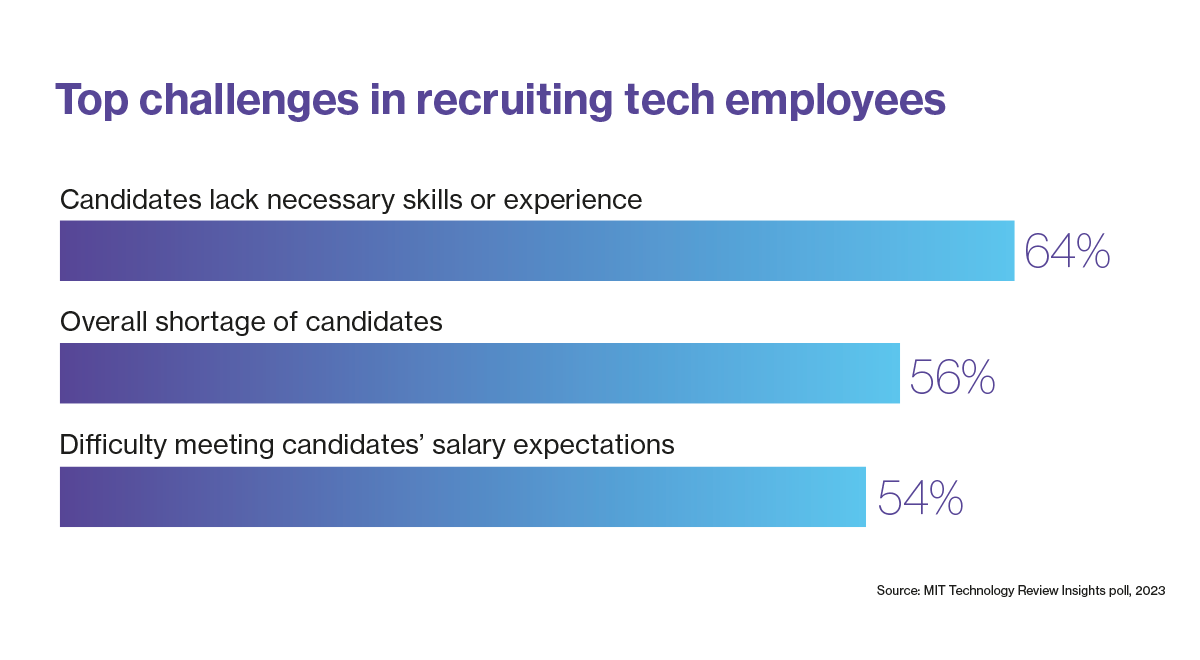
We live in a tech-enabled world, but for organizations to advance world-changing innovations, they need skilled people who can build, install, and maintain the systems that underlie them. Finding that talent is one of the biggest ongoing problems — and opportunities — in tech.

The IT staffing shortages brought on by covid-19 and the Great Resignation are still affecting companies today. In a poll of global tech leaders conducted by MIT Technology Review Insights, 64% of respondents say candidates for their IT and tech jobs lack necessary skills or experience. Another 56% cite an overall shortage of candidates as a concern.
A 2021 Gartner survey of IT executives shows that a majority — 64% — believe the ongoing tech talent shortage is the most significant barrier to the adoption of emerging technologies. By 2030, more than 85 million jobs might go unfilled, “because there aren’t enough skilled people to take them,” according to Korn Ferry. Without that talented workforce, companies could lose out on $8.5 trillion in annual revenue.
Companies are all looking for ways to address this talent shortage in the short term. As the Great Resignation has given way to a Great Reshuffle, with tech employees — including those affected by the tech layoffs of late 2023 and early 2023 — seeking new roles that meet their needs for flexibility, work-life balance, and career growth, some employers have seen the opportunity to differentiate themselves with their career offerings. They compete fiercely to offer the best salaries, benefits, and working conditions; court freshly minted university graduates as well as experienced talent; and bring on contract and temporary workers to bridge the gap.
But tech doesn’t just need short-term bridges. It needs long-term solutions. That’s why some companies are looking earlier in the pipeline — and even building their own pipeline. Innovative tech leaders have begun targeting less traditionally qualified candidates, including those who have just finished secondary school, and they are cultivating that future potential through new early-career programs.
A new approach to early-career candidates
For many people, the traditional path from education to career has followed a linear trajectory: Graduate high school. Go to college, university, or trade school. Get a job. But that approach has its risks — both for students and for potential future employers.

For students, the cost of a university degree can be reason enough to pursue a different path. The College Board reports the average U.S. in-state student pays $10,740 per year for tuition at a public, four-year college (plus an average of $11,950 per year for room and board). According to the same data, the average student will take out $30,000 in loans to earn a bachelor’s degree.
Those prohibitively high costs have impacted diversity within the tech industry. Students who can’t afford a tech degree don’t go to school, and then they don’t join the industry. Further down the line, when future students don’t see tech leaders who come from backgrounds similar to their own, they may opt for a different path.
This content was produced by Insights, the custom content arm of MIT Technology Review. It was not written by MIT Technology Review’s editorial staff
Comments
Post a Comment